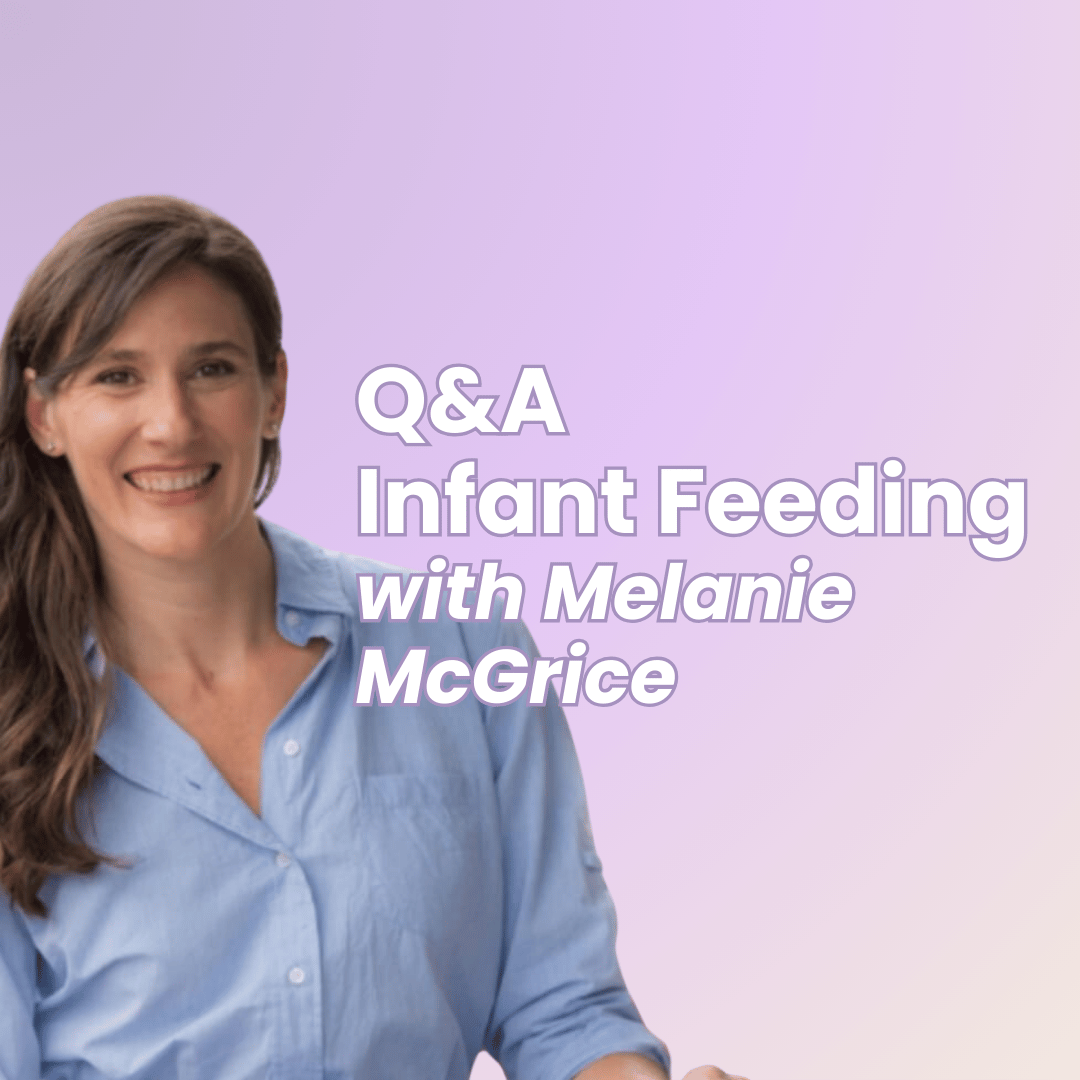
Infant Feeding with Melanie McGrice – Breastfeeding, Formula & Beyond
Share
Navigating Infant Feeding: Common Myths & Expert Advice
Feeding your baby is one of the biggest concerns for new parents. Should you breastfeed? What’s the best formula? How do you introduce solids safely? To answer these questions and more, we sat down with expert dietitian Melanie McGrice to break down some of the biggest myths, challenges, and practical tips around early infant feeding.
Biggest Misconceptions About Infant Feeding
“One of the most common misconceptions I see is that if your baby is crying, they must be hungry. I see so many parents overfeeding their babies and getting into a vicious cycle of crying, feeding, crying, feeding… where the bub is crying from tummy pain instead of hunger. Try block feeding (one breast per feed) and unless you’ve been advised by a healthcare professional or have low supply, there’s usually no need to feed any more frequently than 3-hour intervals.”
Low Supply & Latch Issues
“Latch issues are outside of my scope, but in terms of low supply, feeding frequently is usually the first goal. There’s a lot of advice on social media about dietary galactagogues for low supply, but there’s very little evidence behind most of the recommendations. There’s some evidence for fenugreek, a little on oats, dates, Brewer’s yeast, asparagus, garlic, fennel, and ginger… which unfortunately aren’t as easy to sell as ‘lactation cookies,’ but will likely yield better results.”
Choosing the Right Formula
“When choosing a formula, you firstly need to consider any health concerns that your baby may have… for example, do they have reflux? Cow’s milk protein intolerance? Eczema? All formula that you can purchase from a pharmacy or supermarket will meet the Australian nutritional standards for formula, so next consider additional nutritional requirements that you’d like to strengthen for your little one such as additional omega-3 for brain health or probiotics for immunity.”
Transitioning Between Breastfeeding & Formula
“This is a difficult question as it depends on why a mumma is transitioning to formula, but ideally, it’s best to transition slowly. If possible, swap one feed at a time (starting with less important afternoon feeds first) to allow your bub to get accustomed to the different taste and smell. Ensure that you monitor for rashes or changes in bowel motions.”
Introducing Solids: Signs Your Baby is Ready
“One of the most important signs is that your little one can sit up in a high chair comfortably without needing head supports. They should be able to hold a piece of food, such as a slice of capsicum, in their hand and take it to their mouth. If they can do all that and are at least four months of age, they are ready to start eating!”
Safely Introducing Allergenic Foods
“The earlier that you introduce allergens (after four months), the less likely your little one is to have a reaction, so where possible, start early! I like to put a tiny bit of peanut butter on the tip of a spoon (or on their fingers if I’m happy for them to get messy!) and let them lick it off. Once you’ve started with an allergen, it’s important to continue providing it regularly (ideally twice per week), instead of not giving it to them again for months.”
Gut Health & Infant Feeding
“Gut health is so important for our little ones as it impacts lifelong health. The gut microbiota established during the first 1,000 days (conception to age 3) will be the foundation for their gut microbiome for the rest of their lives. Breastfeeding for as long as possible is one of the best actions parents can take to optimise their little one’s gut microbiota. However, if you are unable to breastfeed, look for a formula with natural prebiotics such as oligosaccharides.”
One Thing All Parents Should Know About Feeding
“You don’t have to puree everything for months! Once you’ve tested them with purees and you’re comfortable that they can swallow it, move on to ‘finger foods.’ Finger foods provide little ones with more choice, more independence and it’s great for gum development. Especially when teething, I’d much rather see a little one chomping on some cold apple or cucumber than plastic.”
Feeding Myths That Need to Disappear
“You don’t need to feed your baby ‘baby food.’ Instead, feed your baby whatever you’re eating (that’s healthy! Skip the chocolate and fries!). Yes, you need to ensure that foods are properly cooked (no pâté or sashimi) and be careful of foods with ‘skins’ like grapes or tomatoes, but generally, they can have a little of whatever you’re eating… even in the puree stage. Salmon and veg for dinner? Perfect! Cut a finger-food slice of each ingredient (about the length and width of your pinky finger so your little one can grip it) and allow your little one to grab what they want to eat. If they’re still at the puree stage, mash the foods that are mashable with a fork. By sharing your meals, your little one will learn to eat and enjoy your repertoire from a young age, and you’ll have a lot fewer battles at the dinner table in years to come!”
Helpful Resources for Parents
“I have an online course called ‘The Postpartum Nutrition Course’ which provides loads of tips and tricks for breastfeeding, formula feeding, and introducing solids. I also run a nutrition clinic that specialises in the first 1,000 days (from preconception through to the third birthday). Consultations can be booked at Nutrition Plus Dietitians - Fertility, PCOS, Pregnancy & Paediatrics.”




